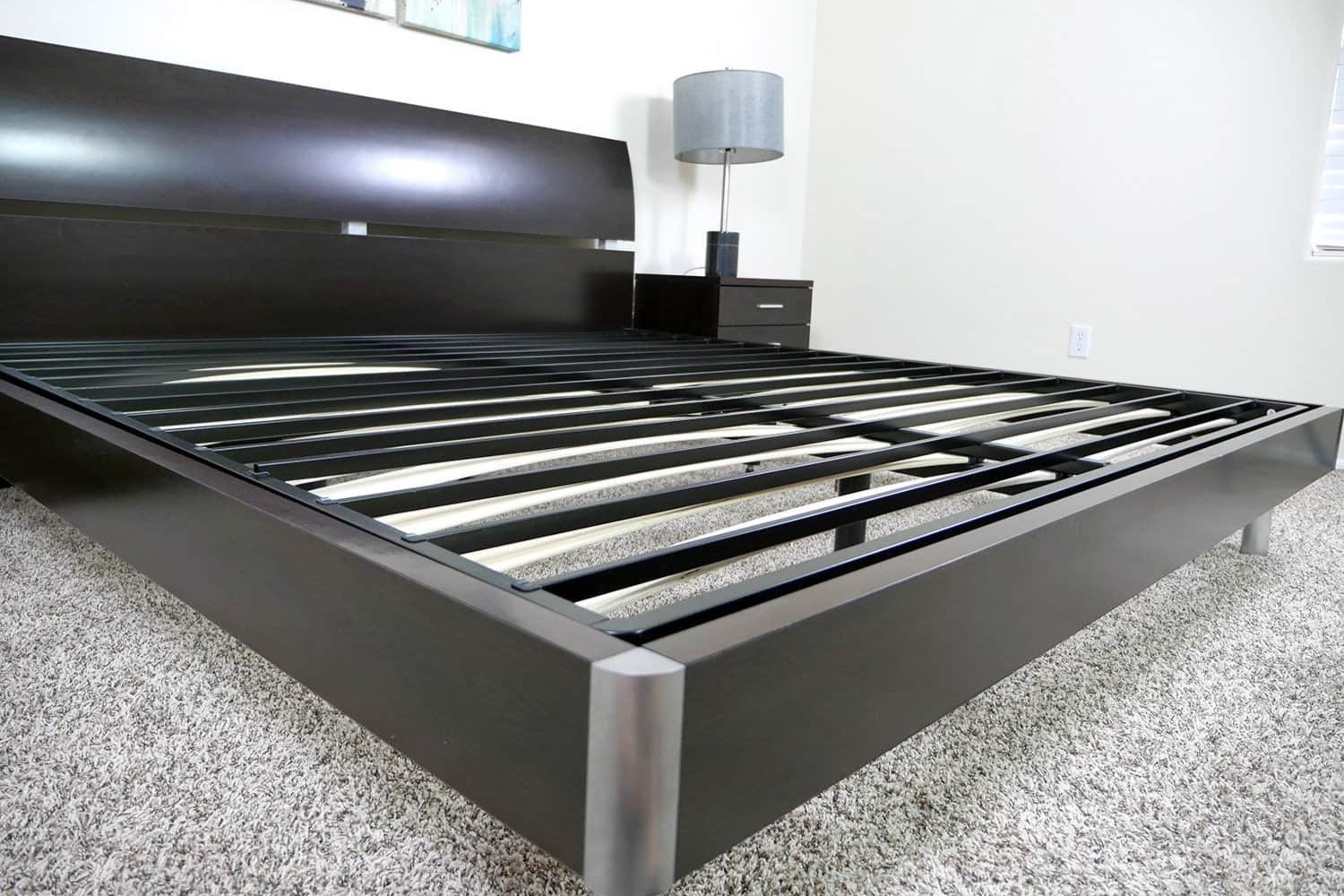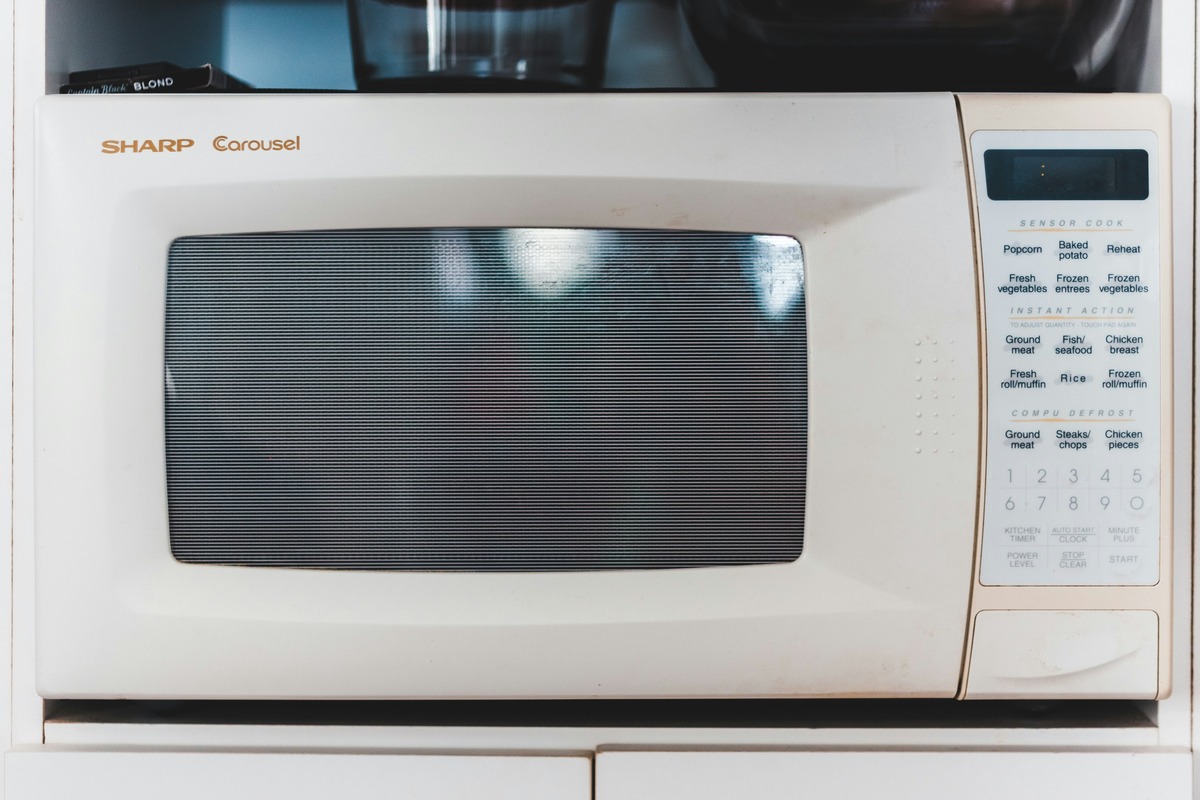Home>Lifestyle>The Surprising Truth About Bunkie Boards For Platform Beds


Lifestyle
The Surprising Truth About Bunkie Boards For Platform Beds
Published: January 15, 2024
Discover the surprising benefits of using bunkie boards for platform beds and how they can enhance your lifestyle. Learn why bunkie boards are a game-changer for your sleeping experience.
(Many of the links in this article redirect to a specific reviewed product. Your purchase of these products through affiliate links helps to generate commission for Noodls.com, at no extra cost. Learn more)
Table of Contents
Introduction
When it comes to setting up a comfortable and supportive sleeping arrangement, the foundation of your bed plays a crucial role. For those with platform beds, the decision to use a bunkie board can significantly impact the overall feel and performance of the mattress. Whether you're a seasoned homeowner or a first-time bed buyer, understanding the role of a bunkie board in a platform bed setup is essential for making informed decisions about your sleep environment.
A bunkie board might seem like a simple addition, but its impact on the comfort and durability of your platform bed should not be underestimated. In this comprehensive guide, we'll delve into the surprising truth about bunkie boards for platform beds. From uncovering the benefits and drawbacks to providing expert insights on choosing the right bunkie board, this article aims to equip you with the knowledge needed to enhance your sleeping experience. So, let's embark on this enlightening journey to unravel the mysteries of bunkie boards and their role in creating the perfect sleep haven.
What is a Bunkie Board?
A bunkie board, often referred to as a bunkie or bunky board, is a thin, sturdy platform typically constructed from plywood or particle board. Measuring around one to three inches in thickness, it is designed to provide a solid and even surface to support a mattress, particularly in the context of a platform bed. The primary purpose of a bunkie board is to offer stability and distribute weight evenly across the mattress, thereby preventing sagging and prolonging the lifespan of the bedding.
This low-profile foundation serves as an alternative to traditional box springs, making it an ideal choice for platform beds, bunk beds, and daybeds. Unlike box springs, which add significant height to the bed, bunkie boards are slim and compact, allowing for a more streamlined and modern aesthetic in the bedroom. Additionally, they are relatively lightweight, making them easy to maneuver and position onto the bed frame.
The composition of bunkie boards may vary, with some featuring solid wood slats for enhanced breathability and support. These slatted bunkie boards promote air circulation, which can be beneficial for certain types of mattresses, such as memory foam, that require adequate ventilation to prevent moisture buildup and maintain optimal performance.
In essence, a bunkie board acts as a stable foundation for the mattress, ensuring that it remains well-supported and free from uneven wear. By providing a solid base, it minimizes the risk of premature mattress deterioration, ultimately contributing to a more comfortable and restful sleep experience.
Understanding the role of a bunkie board is essential for those seeking to optimize their platform bed setup. With its simple yet crucial function, a bunkie board serves as a fundamental component in creating a supportive and durable sleeping surface.
The Benefits of Using a Bunkie Board
Using a bunkie board in conjunction with a platform bed offers a myriad of benefits that can significantly enhance the overall sleeping experience. Here are the key advantages of incorporating a bunkie board into your platform bed setup:
-
Enhanced Mattress Support: A primary benefit of using a bunkie board is the reinforcement it provides to the mattress. By creating a stable and even surface, the bunkie board effectively minimizes the risk of sagging and indentations, ensuring that the mattress maintains its structural integrity over time. This heightened level of support not only promotes better sleep posture but also extends the longevity of the mattress.
-
Improved Comfort: With the added support from a bunkie board, the mattress is better equipped to deliver optimal comfort. The even distribution of weight across the mattress surface reduces the likelihood of discomfort caused by uneven pressure points, resulting in a more consistent and pleasant sleeping experience. This is particularly beneficial for individuals with back pain or those seeking a firmer and more supportive feel from their mattress.
-
Stability and Noise Reduction: Platform beds, especially those with slatted frames, can sometimes produce creaking or squeaking noises when the mattress is placed directly on the slats. By placing a bunkie board on the bed frame, these noises can be mitigated, providing a quieter and more stable sleeping environment. This is particularly advantageous for light sleepers or those sharing the bed with a partner.
-
Enhanced Air Circulation: Certain bunkie boards feature slatted designs that facilitate improved air circulation around the mattress. This enhanced breathability can be especially beneficial for mattresses that require adequate ventilation, such as memory foam or latex mattresses. By promoting airflow, the bunkie board helps regulate temperature and moisture levels, contributing to a fresher and more hygienic sleep surface.
-
Versatility and Aesthetic Appeal: Bunkie boards are known for their versatility and compatibility with various types of mattresses. Whether you have a memory foam, hybrid, or innerspring mattress, a bunkie board can seamlessly accommodate different mattress types, making it a versatile foundation option. Additionally, the slim profile of bunkie boards complements the modern aesthetic of platform beds, lending a sleek and contemporary look to the bedroom while maintaining a low-profile appearance.
In summary, the benefits of using a bunkie board for a platform bed encompass improved mattress support, enhanced comfort, stability, noise reduction, better air circulation, and versatile compatibility. These advantages collectively contribute to a more supportive, durable, and aesthetically pleasing sleep environment, making the inclusion of a bunkie board a valuable investment for anyone seeking to optimize their platform bed setup.
The Drawbacks of Using a Bunkie Board
While bunkie boards offer a range of benefits, it is important to consider potential drawbacks associated with their use in platform bed setups. Understanding these limitations can help individuals make informed decisions based on their specific sleep needs and preferences.
-
Reduced Height and Accessibility: One of the primary drawbacks of using a bunkie board is its potential to lower the overall height of the bed. Platform beds, particularly those with low profiles, may experience a significant reduction in height when a bunkie board is added. This can impact the accessibility of the bed, making it more challenging for some individuals, especially those with mobility issues, to comfortably get in and out of bed.
-
Limited Shock Absorption: Unlike traditional box springs, which provide a degree of shock absorption, bunkie boards are relatively rigid and may not offer the same level of cushioning. This lack of shock absorption can be a concern for individuals who prefer a softer and more yielding surface, as the firmness of the bunkie board may not adequately mitigate impact or movement, potentially leading to discomfort for some sleepers.
-
Potential Incompatibility with Certain Mattresses: While bunkie boards are designed to accommodate a variety of mattress types, including memory foam, hybrid, and innerspring mattresses, there may be instances where a bunkie board is not the ideal foundation. For example, certain adjustable or articulating mattresses may not function optimally with a bunkie board, as the rigid support may hinder the mattress's flexibility and range of motion.
-
Maintenance and Cleaning Challenges: Bunkie boards, especially those with slatted designs, can pose challenges when it comes to cleaning and maintenance. Dust, debris, and pet dander may accumulate within the slats, requiring thorough and meticulous cleaning to ensure a hygienic sleep environment. Additionally, the presence of slats can make it more difficult to spot and address potential mattress stains or spills, as the bunkie board partially obscures the underside of the mattress.
-
Cost Considerations: While bunkie boards are generally more affordable than traditional box springs, the initial investment in a bunkie board may still be a consideration for budget-conscious consumers. Additionally, if a bunkie board needs to be replaced due to wear and tear, the recurring cost of purchasing a new board should be factored into the long-term financial implications of using this type of foundation.
In summary, while bunkie boards offer valuable support and stability for platform beds, it is important to weigh the potential drawbacks, including reduced bed height, limited shock absorption, compatibility concerns, maintenance challenges, and cost considerations. By carefully evaluating these factors, individuals can make well-informed decisions regarding the inclusion of a bunkie board in their platform bed setup, ensuring that their sleep environment aligns with their unique comfort and practicality preferences.
Do You Need a Bunkie Board for Your Platform Bed?
The decision to use a bunkie board for your platform bed hinges on several factors, including the type of mattress, the bed frame design, and personal preferences. Understanding the specific scenarios where a bunkie board is beneficial can guide individuals in determining whether it is a necessary addition to their sleep setup.
First and foremost, the type of mattress plays a pivotal role in determining the need for a bunkie board. For mattresses that require a solid and even foundation, such as memory foam or latex mattresses, a bunkie board can provide the necessary support to prevent premature wear and maintain the mattress's structural integrity. Additionally, for individuals who prefer a firmer and more stable feel from their mattress, incorporating a bunkie board can enhance the overall comfort and support, contributing to a more restful sleep experience.
The design of the platform bed frame also influences the need for a bunkie board. Platform beds with slatted frames may benefit from the addition of a bunkie board, as the board creates a uniform surface that minimizes the risk of the mattress sagging between the slats. Moreover, for platform beds with low profiles or minimal under-bed clearance, a bunkie board can mitigate the risk of the mattress coming into contact with the floor, ensuring proper ventilation and preventing potential damage to the mattress.
Personal preferences regarding bed height, firmness, and noise levels also factor into the decision. Individuals who prefer a higher bed height may opt to forgo a bunkie board, as the board can reduce the overall elevation of the bed. Conversely, those seeking a firmer and quieter sleep surface may find that a bunkie board addresses their specific comfort and stability preferences, making it a valuable addition to their platform bed setup.
In summary, the need for a bunkie board for a platform bed is contingent on the mattress type, bed frame design, and individual comfort preferences. By evaluating these factors, individuals can determine whether a bunkie board is essential for optimizing the support, durability, and overall feel of their platform bed, ultimately tailoring their sleep environment to align with their specific sleep needs and preferences.
How to Choose the Right Bunkie Board for Your Platform Bed
Selecting the right bunkie board for your platform bed is crucial for optimizing the support, comfort, and longevity of your mattress. With a myriad of options available, it's essential to consider several key factors to ensure that the chosen bunkie board aligns with your specific sleep needs and preferences.
1. Measure Your Bed Frame:
Begin by measuring the dimensions of your platform bed frame. Accurate measurements of the length, width, and depth will help you determine the appropriate size of the bunkie board needed to fit snugly onto the bed frame. It's important to ensure that the bunkie board matches the exact dimensions of the bed frame to prevent any overhang or instability.
2. Consider Mattress Type:
Take into account the type of mattress you have or plan to use with the bunkie board. Different mattresses have varying support requirements, and the bunkie board should complement the specific needs of your mattress. For example, memory foam mattresses benefit from solid support to prevent sinking, while hybrid mattresses may require additional airflow, making slatted bunkie boards a suitable choice.
3. Evaluate Material and Construction:
Assess the material and construction of the bunkie board to ensure its durability and performance. Plywood and particle board are common materials used in bunkie boards, with plywood offering sturdiness and particle board providing a more cost-effective option. Additionally, consider slat spacing and thickness if opting for a slatted bunkie board, as these factors can impact airflow and support.
4. Weight Capacity:
Be mindful of the weight capacity of the bunkie board, especially if you have a heavier mattress or require additional support. Checking the weight limit specified by the manufacturer ensures that the bunkie board can adequately uphold the combined weight of the mattress and sleepers, preventing premature wear and structural issues.
5. Compatibility with Bed Frame:
Ensure that the chosen bunkie board is compatible with your platform bed frame. Some bed frames may have specific requirements or restrictions regarding the type of foundation that can be used. Understanding the compatibility guidelines will help you select a bunkie board that seamlessly integrates with your bed frame, promoting stability and safety.
6. Noise Reduction Features:
If noise reduction is a priority, consider bunkie boards designed to minimize creaking or squeaking sounds often associated with platform beds. Look for features such as padded or non-slip surfaces that dampen vibrations and enhance the overall stability and quietness of the sleep surface.
By carefully considering these factors, you can confidently choose the right bunkie board for your platform bed, ensuring that it harmonizes with your mattress, bed frame, and specific comfort requirements. This thoughtful selection process sets the foundation for a supportive, comfortable, and durable sleep environment, allowing you to fully enjoy the benefits of your platform bed setup.
Conclusion
In conclusion, the inclusion of a bunkie board in a platform bed setup can significantly impact the overall comfort, support, and longevity of the mattress. By providing a stable and even foundation, bunkie boards offer enhanced mattress support, improved comfort, stability, noise reduction, and versatile compatibility with various mattress types. These benefits collectively contribute to a more restful and durable sleep environment, making the incorporation of a bunkie board a valuable investment for individuals seeking to optimize their platform bed experience.
While the decision to use a bunkie board depends on factors such as mattress type, bed frame design, and personal preferences, it is essential to carefully weigh the potential drawbacks, including reduced bed height, limited shock absorption, compatibility concerns, maintenance challenges, and cost considerations. By evaluating these factors, individuals can make informed choices regarding the inclusion of a bunkie board in their platform bed setup, ensuring that their sleep environment aligns with their unique comfort and practicality preferences.
When selecting a bunkie board for a platform bed, considerations such as accurate measurements, mattress type, material and construction, weight capacity, compatibility with the bed frame, and noise reduction features are crucial for ensuring that the chosen bunkie board harmonizes with the mattress, bed frame, and specific comfort requirements. This thoughtful selection process sets the foundation for a supportive, comfortable, and durable sleep environment, allowing individuals to fully enjoy the benefits of their platform bed setup.
In essence, the surprising truth about bunkie boards for platform beds lies in their ability to transform a simple sleep surface into a supportive and rejuvenating haven. Whether it's enhancing mattress support, promoting better sleep posture, or minimizing noise disturbances, the impact of a well-chosen bunkie board extends beyond mere functionality to elevate the overall sleep experience. By understanding the role of bunkie boards and making informed decisions about their inclusion, individuals can embark on a journey to create the perfect sleep haven, where comfort, support, and durability converge to promote restful and rejuvenating sleep night after night.













